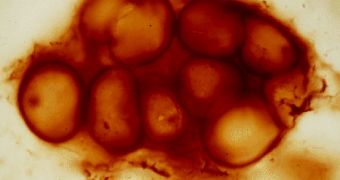In the depths of some Roman ancient tombs two new species of live bacteria have been discovered. They could prove useful in protecting the monuments with high cultural heritage importance, says a new study.
The Saint Callistus catacombs are part of an enormous graveyard that spreads on an area of 15 hectares (about 15 football arenas). Built in the late 2nd century AD, they bear the name of Pope Saint Callistus I, and they house the remains of more than 30 martyrs and popes. Professor Dr. Clara Urzì of the University of Messina in Italy sheds light on the discovery: "Bacteria can grow on the walls of these underground tombs and often cause damage. We found two new species of bacteria on decayed surfaces in the catacombs and we think the bacteria, which belong to the Kribbella group, may have been involved in the destruction."
Close observations of the monument-ruining bacteria could yield important information on how such places like the catacombs in Rome could be better preserved in the future. Furthermore, the pair of newly-discovered bacterial species is believed to be able to produce molecules (enzymes and antibiotics) with interesting and useful features. As Dr. Urzì states, "The special conditions in the catacombs have allowed unique species to evolve. In fact, the two different Kribbella species we discovered were taken from two sites very close to each other; this shows that even small changes in the micro-environment can lead bacteria to evolve separately."
The two new microorganisms have been called Kribbella catacumbae and Kribbella sancticallisti and belong to the Kribbella species which is found in ancient sites all over the world, from a South African racecourse to a German medieval mine. "The worldwide existence of the genus Kribbella raises questions about the path of evolution," adds Professor Urzì. "If the bacteria are very old, does the wide geographical distribution prove the genus is stable? Or have similar bacteria evolved in parallel to one another in different places? The questions are made even more interesting by the discovery of these two different bacteria in the Roman tombs."

 14 DAY TRIAL //
14 DAY TRIAL //